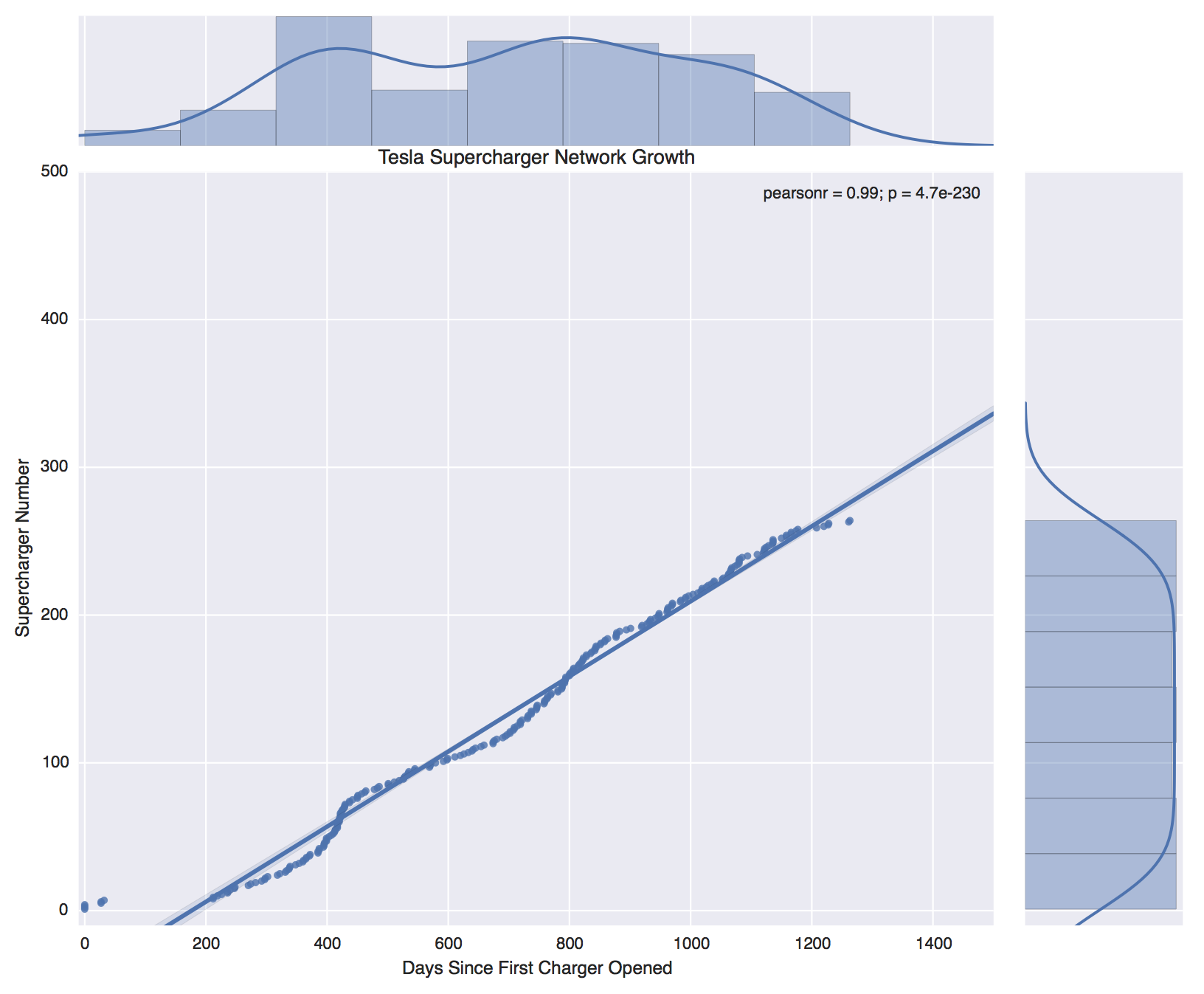Tesla Motors: Supercharger Network Growth
Overview:
The purpose of this project was to explore the growth of the company Tesla Motors, specifically the growth of the Supercharger network. Free Supercharging for the lifetime of your vehicle is a huge selling point when buying a new Tesla, so I set out to test the hypothesis that the amount of Tesla vehicle sales in the US grow proportionally to the growth of available Superchargers. To complete this fast I collected available data on the Superchargers (including GPS coordinates, opening dates and number of charging stalls per station) along with Tesla vehicle sales data for the US. I was able to draw conclusions about the data using a combination of regressions and visualization techniques.
The Data:
My first data set was a comprehensive table from the creators of Teslarati who were able to aggregate the information about all Tesla Supercharging stations in the United States. This was my main data set for the project as it contained not only the location and opening date of each charger, but also additional info such as GPS coordinates, the status of the station (Open, Under Contruction, or Permit Received), and the specific number of charging stalls.
My second data set comes from the website Inside EVs, which keeps a monthly sales scorecard for electric Vehicles. Tesla does not release monthly sales numbers, so Inside EVs uses the confirmed quarterly and annual sales figures to extrapolate the estimated sales for each month, and does so pretty accurately.
Techniques:
First I imported all of the data I wanted to explore into chronologically ordered lists from the original CSVs in which the data was contained. I started off with basic line graphs of the Supercharger network and the Tesla vehicle sales to get a visual representation of the trend. Afterwards I made use of the the statistical Python package Seaborn to create a linear regression line through my Supercharger data, which I would use to forecast the growth of the network. With a pearson correlation coefficient of .99, I knew the Supercharger amount was growing linearly over time. I also compared the ratio of Tesla vehicles on the road to the amount of current charging stalls available across the US and found that the ratio, which had been shrinking in the previous years, has began to grow since the introduction of the Tesla Model X.
As a side project, and to make use of more of the data I obtained, I created an interactive plot of the Tesla charging stations in the US using GMapPlot from bokeh which allowed me to accreted place the GPS coordinates of the chargers on top of a google map. The chargers are color-coded by their status and hovering over each point displays additional information about that particular station.
Click here to see an infographic with my findings!
GMapPlot is still relatively new and has a few bugs. If map is not loading correctly try this mirror link.
This is a map of all current Tesla Superchargers within the United States. Green indicates an open station, Orange indicates under construction, and Blue represents that a permit has been granted to start construction of a new charging station soon. Hovering over the dots will display the location, status and number of charging stalls of the selected Supercharging station.
Feel free to zoom in and pan across the map to get a closer look!
This graph shows the number of Tesla vehicle sales in the US since the car became commercially available. You can zoom in on the graph to see the numbers for specific months.

This is a linear regression analysis of the number of Tesla Superchargers in the US since the construction of the initial 5 stations, used to model the growth of the network
Citations and Sources:
Supercharger Data
Tesla Sales Data
Seaborn Documentation
Bokeh geoplotting guide
HTML coding help


